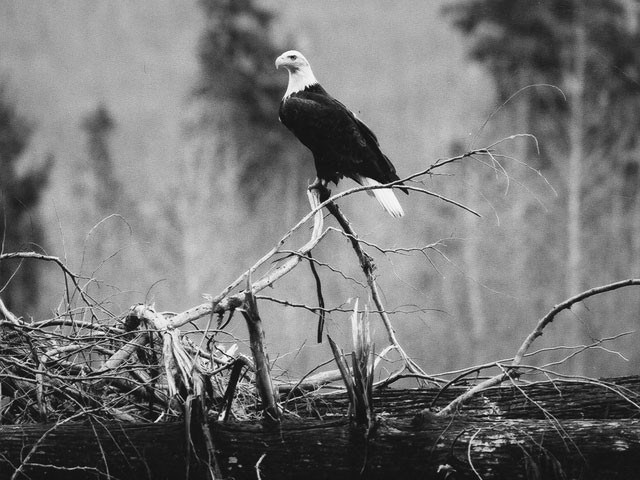Like canaries in the coal mine, birds can tell us a lot about the state of environment and climate. That’s why the Christmas Bird Count has become a 108-year tradition in North America, with the Audubon Society collecting the count numbers from more than 2,000 participating regions.
At this time of year the lack of snow on the trees makes the birds easier to spot, and most migratory species have reached their wintering destinations. The count itself runs from Dec. 14 to Jan. 5.
Noteworthy bird sightings and non-sightings are written up in the groups’ annual reports, and the data is used to identify what bird populations are in decline or growing.
There was not too much to report from this year’s Whistler Bird Count, which took place on Friday, Dec. 14.
According to organizer Karl Ricker, this was the fifth lowest count on record for the community, with 10 volunteers logging 33 species — roughly eight fewer species than average. The overall number of birds counted was a more normal 2,659, which was boosted by clouds of Pine Siskins in the valley. It was the second highest Pine Siskin count in the 18 years that Whistler has been participating.
But while the numbers were low, there were a few notable findings. Joan Plomske and Judy Vetch recorded a rare Northern Goshawk, as well as a Northern Shrike, while walking around the Whistler Golf Course.
The on-mountain groups — Mayor Ken Melamed and Jim Sharin on Whistler and Sean Aldcroft on Blackcomb — also managed to spot White-winged Crosbills, Red Crossbills and Mountain Chickadees. Aldcroft also spotted a Crossin’s finch, the first ever for the Whistler Christmas Bird Count. That brings the Christmas Count species list to 94 for next year.
Local birdwatchers also submit reports for birds seen around the count week, which would bring the number of species counted to 42. When the last month is considered, more than 19 birds spotted recently did not make an appearance on the count day.
Waterfowl spottings were way down this year, with just four species logged. The number of gulls spotted was also a record low of two, compared to when the landfill was open and bird watchers would count thousands of the birds.
Ricker also participated in the Squamish Bird Count on Sunday, Dec. 16. That count was slightly below average with 65 species recorded, but with no count groups in the Wood Fibre area or on Diamond Head. It was also a day of often heavy rain that sent smaller birds to find shelter.
On the positive side, birdwatchers counted 2,166 bald eagles and one golden eagle, which was higher than average and will likely lead North America. Their highlight birds included a Northern Shrike, and a cackling goose. At the landfill, gulls numbered more than 2,200 before the watchers stopped counting.
One of the most surprising finds was the low count of dippers. Usually 40 or 50 are reported, while this year counters could only find 27. Whistler’s average dipper count is 12, and this year watchers could only see five.
The remainder of the Sea to Sky counts will be conducted over the next week — Pemberton on Tuesday, D’Arcy on Wednesday, Howe Sound on Dec. 28 and Lillooet on Dec. 30.




